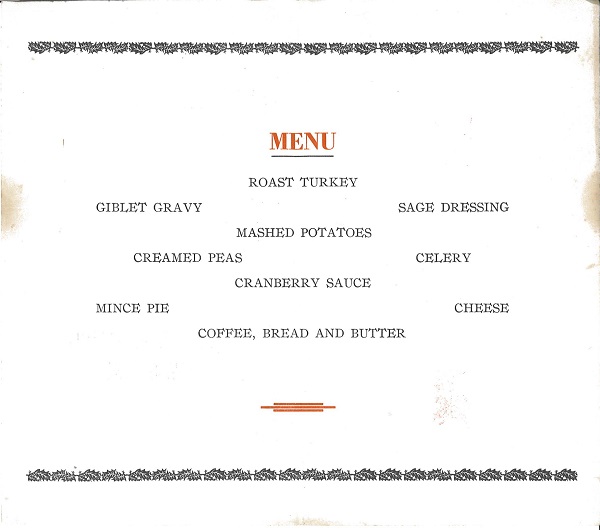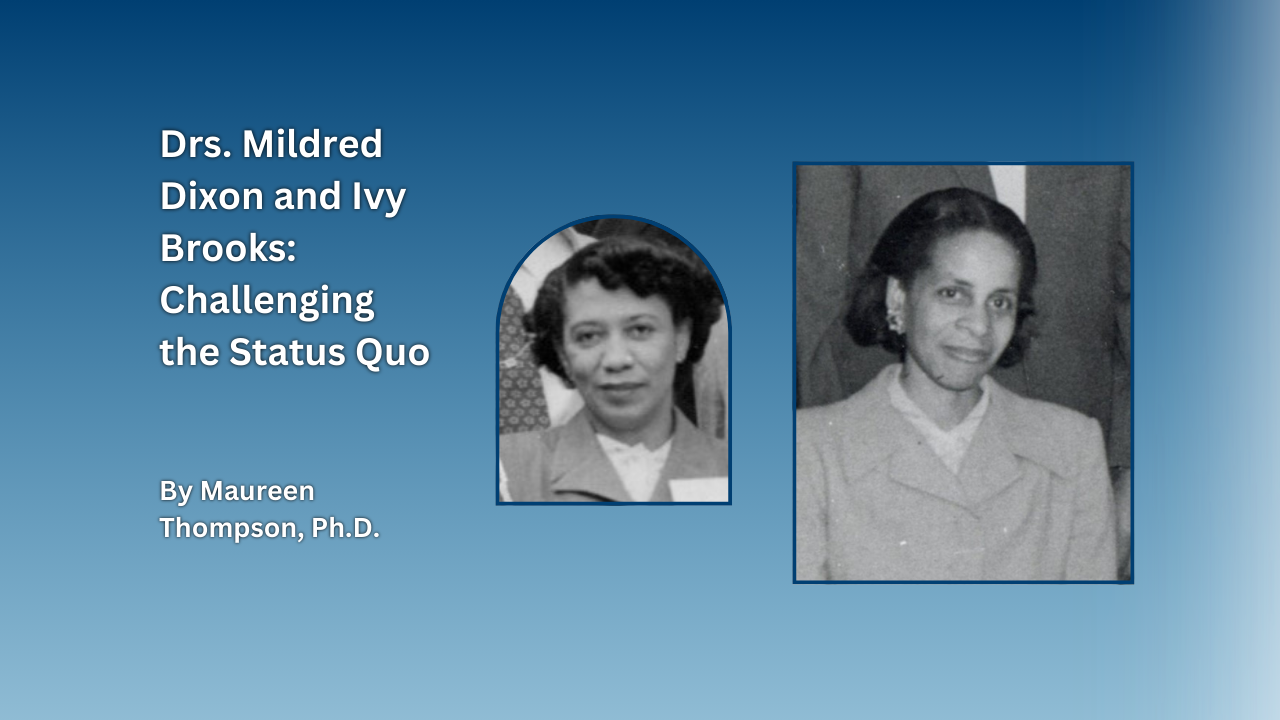
As another Thanksgiving is upon us, thoughts turn towards the traditions that surround the holiday, many of them involving food. Amid shopping, chopping, baking and barking, there may be some among us who stand in the middle of the kitchen wondering how those before us got it all done.
At the National VA History Center Archives, staff members (tired of their own frantic recipe Googling) went looking to see what past Thanksgivings looked like and were rewarded with positive results.
From a note in the Cincinnati Enquirer dated 26 November 1897, we know that several thousand pies, 500 quarts of cranberry sauce, and 25 bushels of sweet potato were on the menu. Also noted was the presence of approximately 5,000 Veterans. (The Archives team now looks upon their own more modest families, and the dishes that will need washed, a little more favorably.)
Forty years later, in 1931, very little changed, other than the oyster dressing being changed out for sage.
Interestingly, on the day this menu was used, Thanksgiving was not a legal holiday. That didn’t happen until 1941, in which the fourth Thursday of November was declared as Thanksgiving Day.
Moving forward almost 40 more years, the 1970 menu has a little more color and vibrancy, but items served changed little, with the possible exception of, again, the dressing. Here, the menu shows southern dressing. Since some team members were back to Googling recipes, it seems that Southern dressing is made with liberal amounts of sage and oysters are optional. So, really, nothing has changed.

From everyone at the VA History Office, we wish you and your family a warm, safe holiday.
Sources
By Robyn Rodgers
Senior Archivist, VA History Office and the National VA History Center
Share this story
Related Stories
Featured Stories
During the late evening, early hours of April 23-24, 1865, the Black Diamond, a ship on the Potomac River searching for President Abraham Lincoln's assassin John Wilkes Booth collided with another ship, the USS Massachusetts. The incident was a terrible accident during the frantic mission to locate the fleeing Booth before he escaped into Virginia. Unfortunately many lives were lost, including four civilians who had been summoned from a local fire department by the Army. For their assistance during this military operation, all four were buried in the Alexandria National Cemetery, some of the few civilians to receive that honor.
Featured Stories
In the mid-twentieth century, the lives of Dr. Ivy Brooks and Mildred Dixon, two trailblazing Black women physicians, converged at the Tuskegee, Alabama, VA Medical Center. Doctor's Ivy Roach Brooks and Mildred Kelly Dixon shared much in common. Both women were born in 1916 in the northeastern United States and received training in East Orange, New Jersey. They both launched careers in alternate medical professions before entering the fields of radiology and podiatry, respectively. Pioneering many “firsts” throughout their professional lives, both women faced and overcame the rampant racism and sexism of the era.
Featured Stories
After the United States entered World War I in 1917, American Expeditionary Force commander General John J. Pershing requested the recruitment of women telephone operators that were bi-lingual in English and French. Eventually 233 were selected out of over 10,000 applicants, and they served honorably through the war, earning the nickname of 'Hello Girls.'
However, their employment was not officially recognized as military service and therefore were neither honorably discharged, or eligible for the benefits other returning Veterans would receive. This kicked off a 60-year fight for 'Hello Girls' to receive legal Veteran status.









